NGC Ancients: A New Coin Type of Roman Egypt
Posted on 9/16/2014
In the field of ancient coins new coin types are discovered with some frequency. Though ‘discovery’ ancients are rare in comparison to documented types, the field is so broad that there is much greater opportunity to discover previously unknown types than in most any other area of numismatics.
One of the many ‘discovery’ coins that came across the desk at NGC Ancients was published in the June 2013 issue of the NGC eNewsletter. A few months later it fetched a king’s ransom at auction. Had this silver denarius of the Roman Emperor Hadrian (A.D. 117-138) been a common type – even in its excellent state of preservation – it would have been worth in the $500 to $750 range. However, its importance as a discovery piece caused it to be hammered down to a determined bidder for $10,000 plus the buyer’s premium at the Heritage World Coin Auction held April 10, 2014.
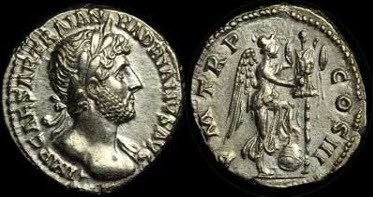
Another ‘discovery’ ancient is this copper drachm from the mint of Alexandria, Egypt, which also was struck for the Emperor Hadrian. Sent in for identification and grading by dealer member American Coin & Stamp Brokerage of Merrick, NY, it immediately caught the attention of our experts as something worthy of extra research.
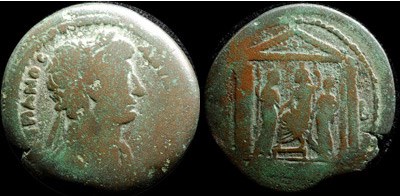
The style of the emperor’s portrait belongs to the earliest years of his reign, a fact confirmed by the date on the reverse. The letter “B” to the right of the temple and a faint trace of the letter “L” to the left indicate that this coin was struck in the second year of coinage in Egypt during Hadrian’s reign, thus sometime between August 29, A.D. 117 and August 28, A.D. 118. The reason for this odd (and precise) period of issue is that the calendar year in Roman Egypt began on August 29.
The aspect of this coin that makes it unusual is the three figures within the temple on the reverse. An expert on the coins of Roman Egypt, Kerry Wetterstrom of the Classical Numismatic Group of Lancaster, PA, acknowledges that this type appears to be a discovery. He notes: "Even for a coinage as well-published as that of Roman Egypt, one can still find new, previously unknown types. This is one of the many reasons the coinage of Roman Egypt remains popular with today's collectors."
The combination of the three divinities within the temple betrays the rich and varied religious beliefs of the people who lived in Egypt during the period of Roman domination. The central figure unquestionably is Serapis, an Egyptian-style god of Greek creation. For comparison, see the image of Serapis on this copper drachm struck in Egypt in A.D. 141/2 for Hadrian’s successor, the Emperor Antoninus Pius (A.D. 138-161).
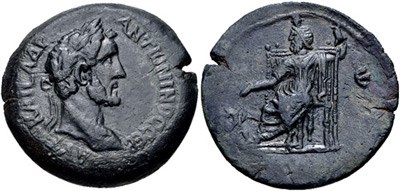
The goddess standing to the right of Serapis is Tyche, the protectress of cities and the goddess of good fortune and prosperity, known to the Romans as Fortuna. She often is portrayed on ancient coinage, including on this Egyptian drachm of Hadrian struck in A.D. 132/3.
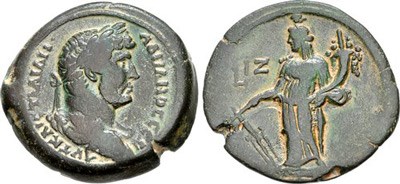
The figure to the left of Serapis is more difficult to identify with certainty, despite the clarity of the design. She most likely is the Greek goddess Demeter. Known to the Romans as Ceres, this divinity had a primary responsibility for agriculture. A figure of Demeter strikingly similar to the one on the discovery coin appears at the left on the reverse of this copper drachm struck in Egypt in A.D. 113/4 for the Emperor Trajan (A.D. 98-117).
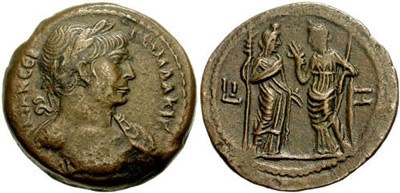
Images courtesy of Classical Numismatic Group.
Stay Informed
Want news like this delivered to your inbox once a month? Subscribe to the free NGC eNewsletter today!
